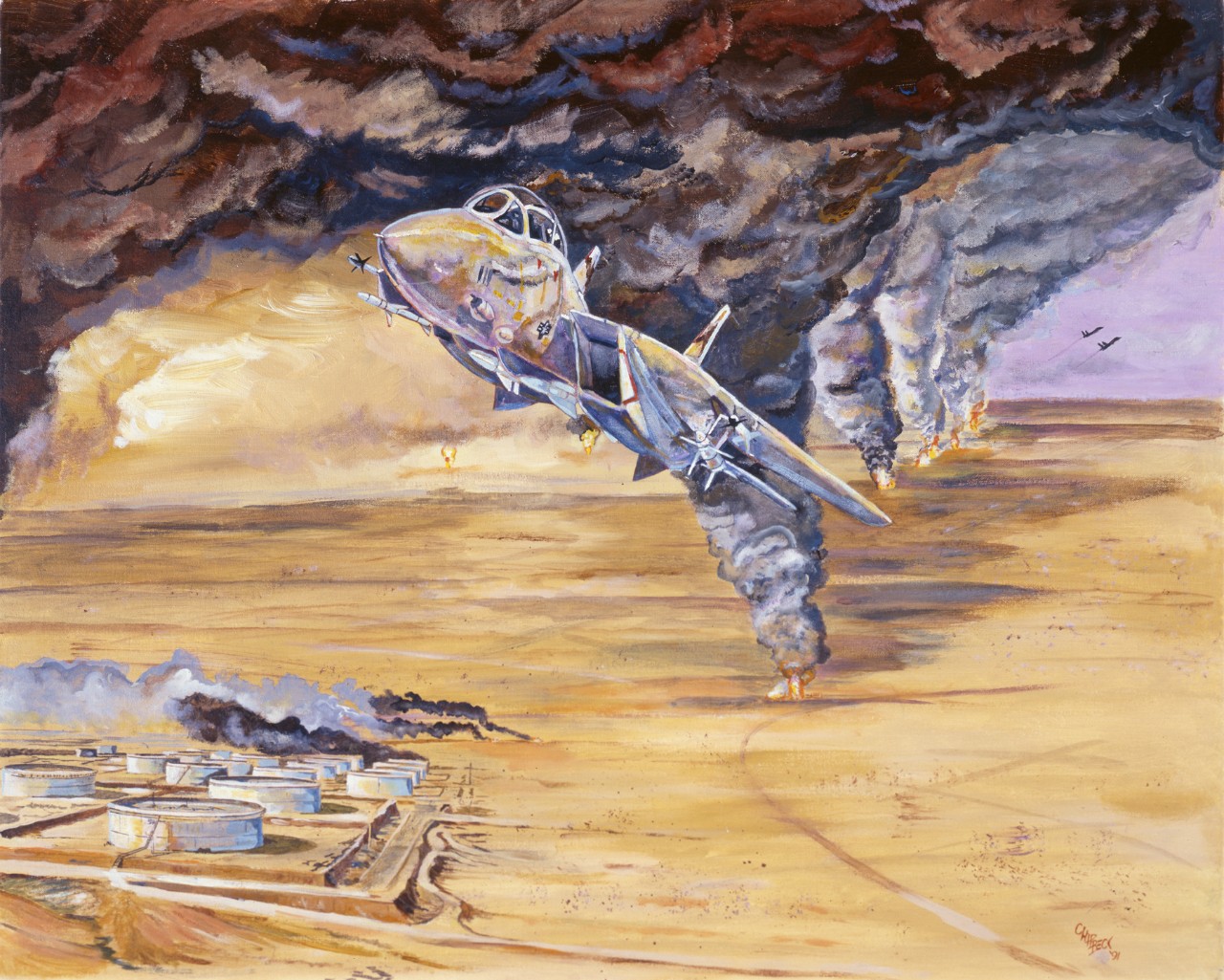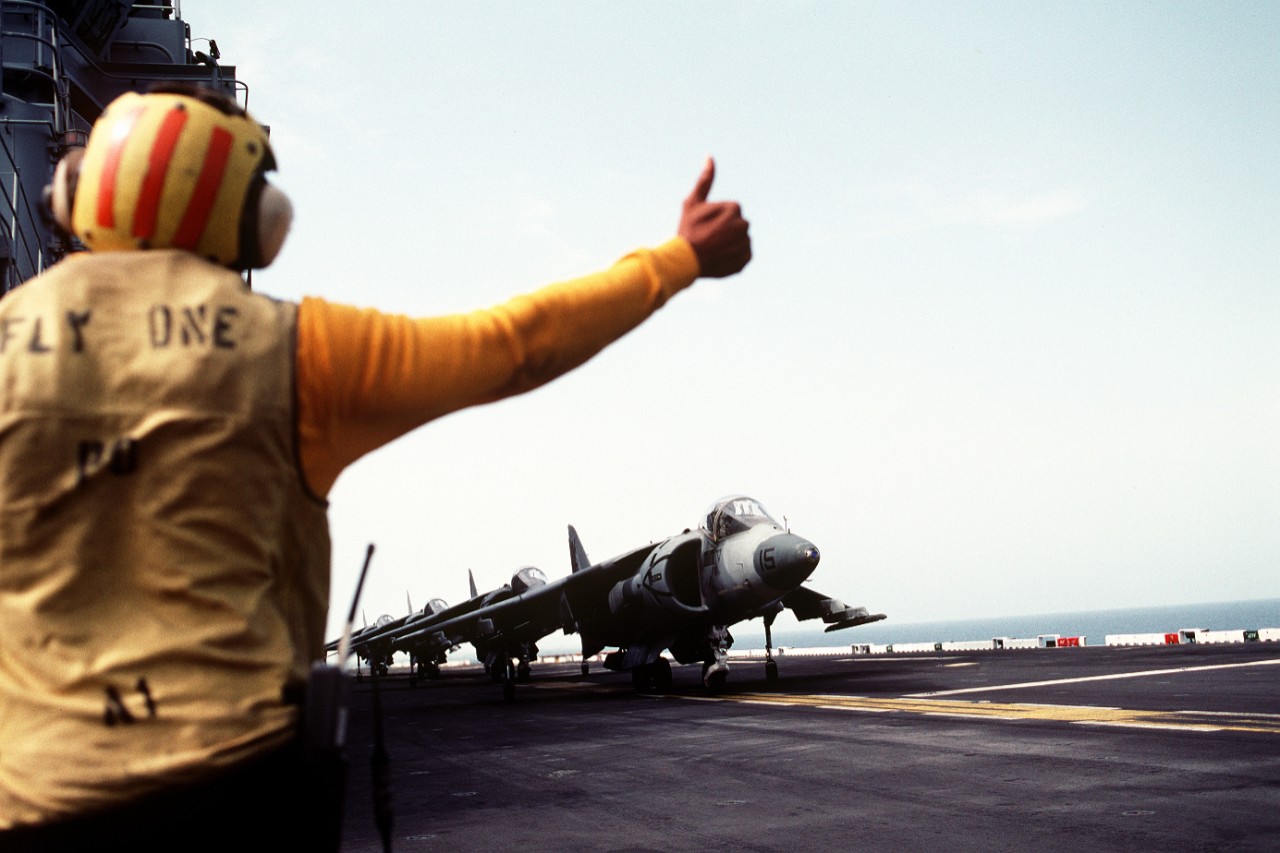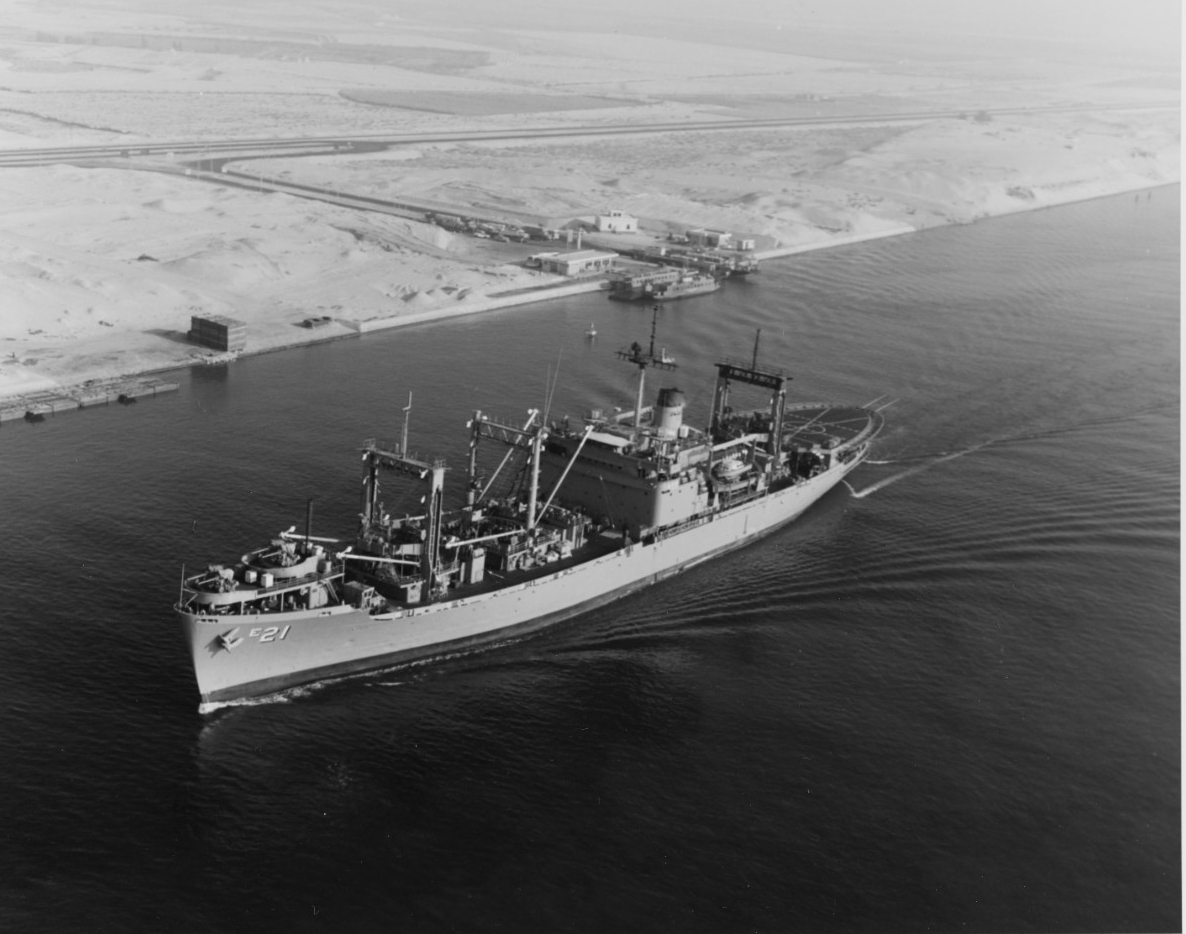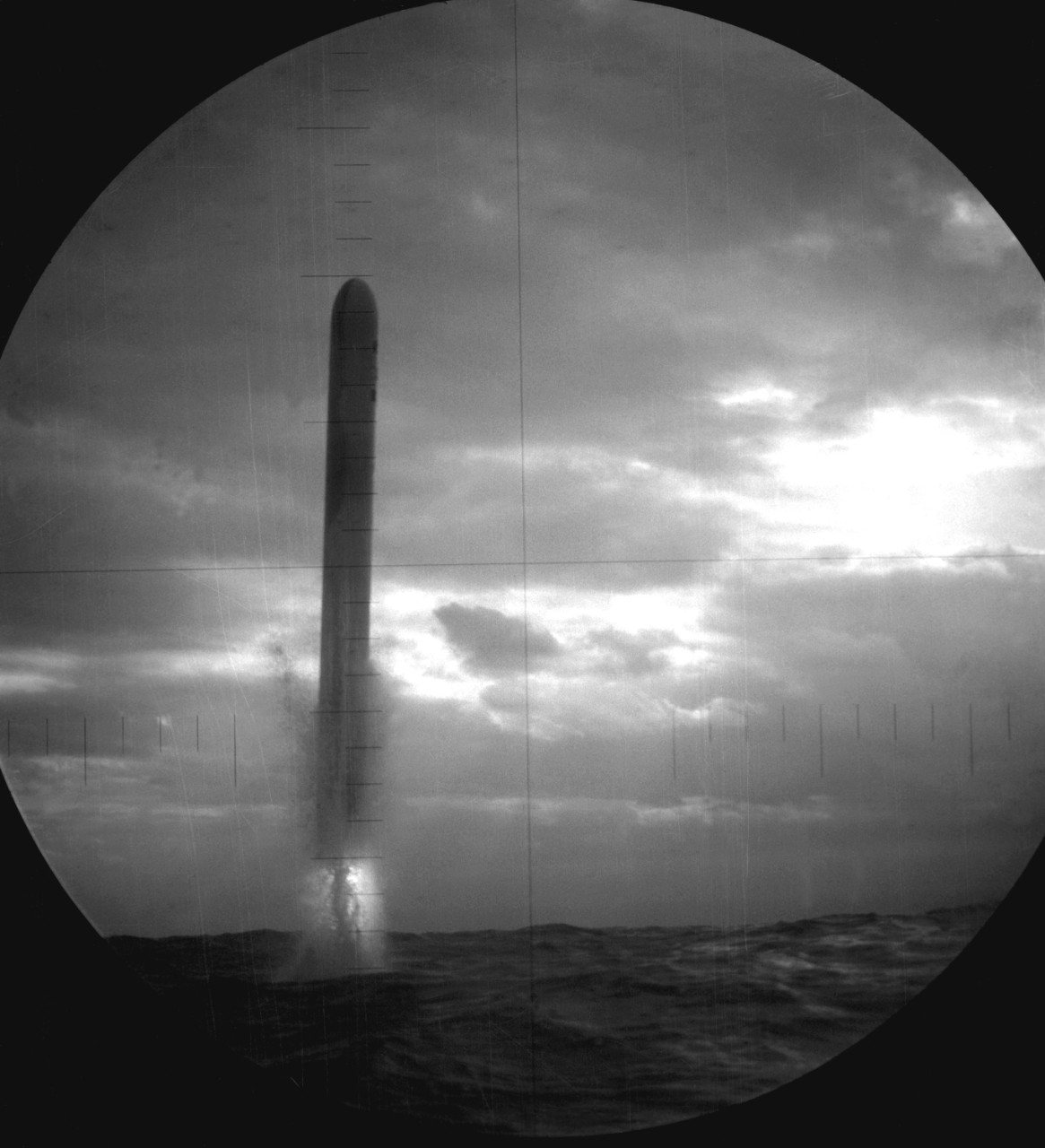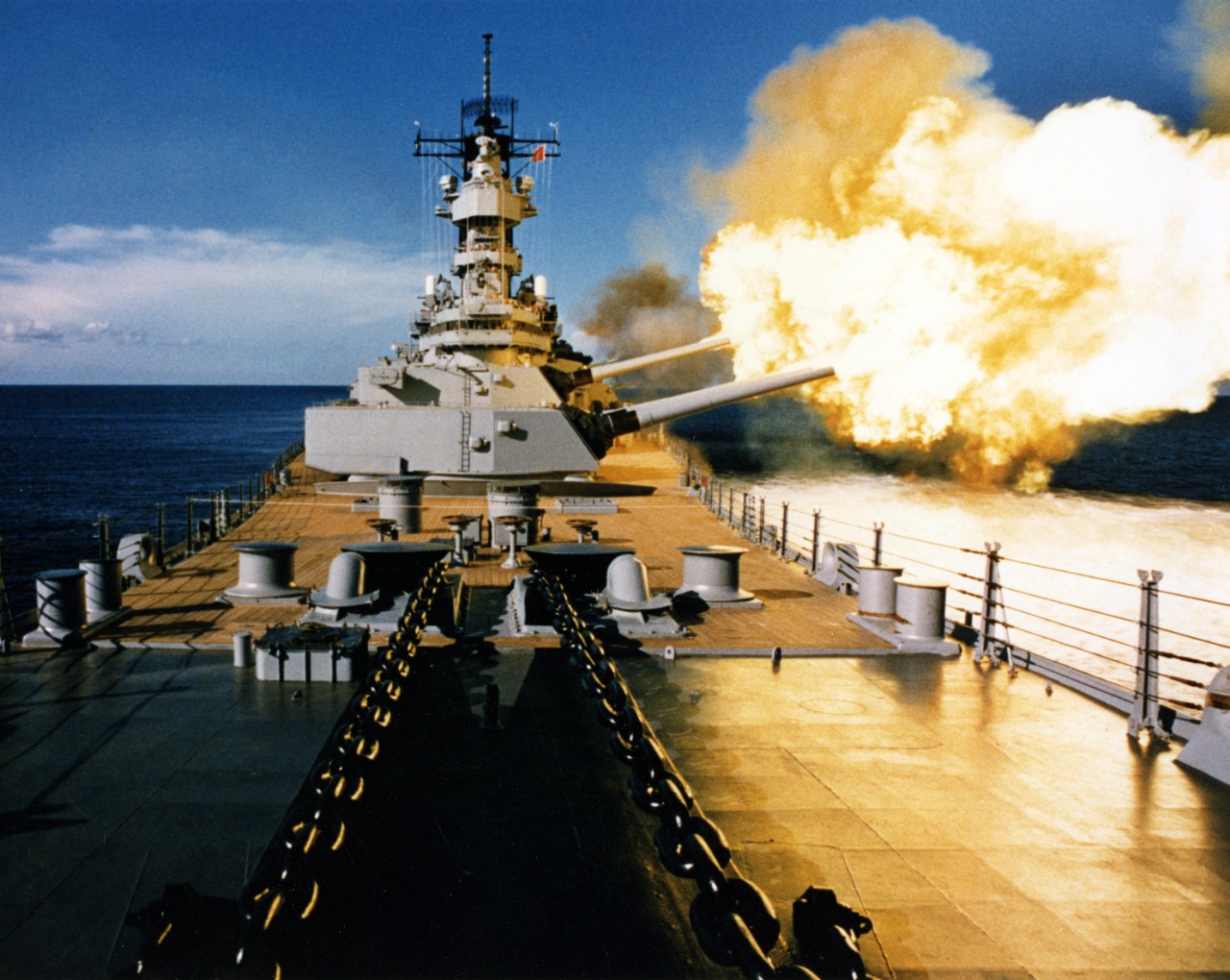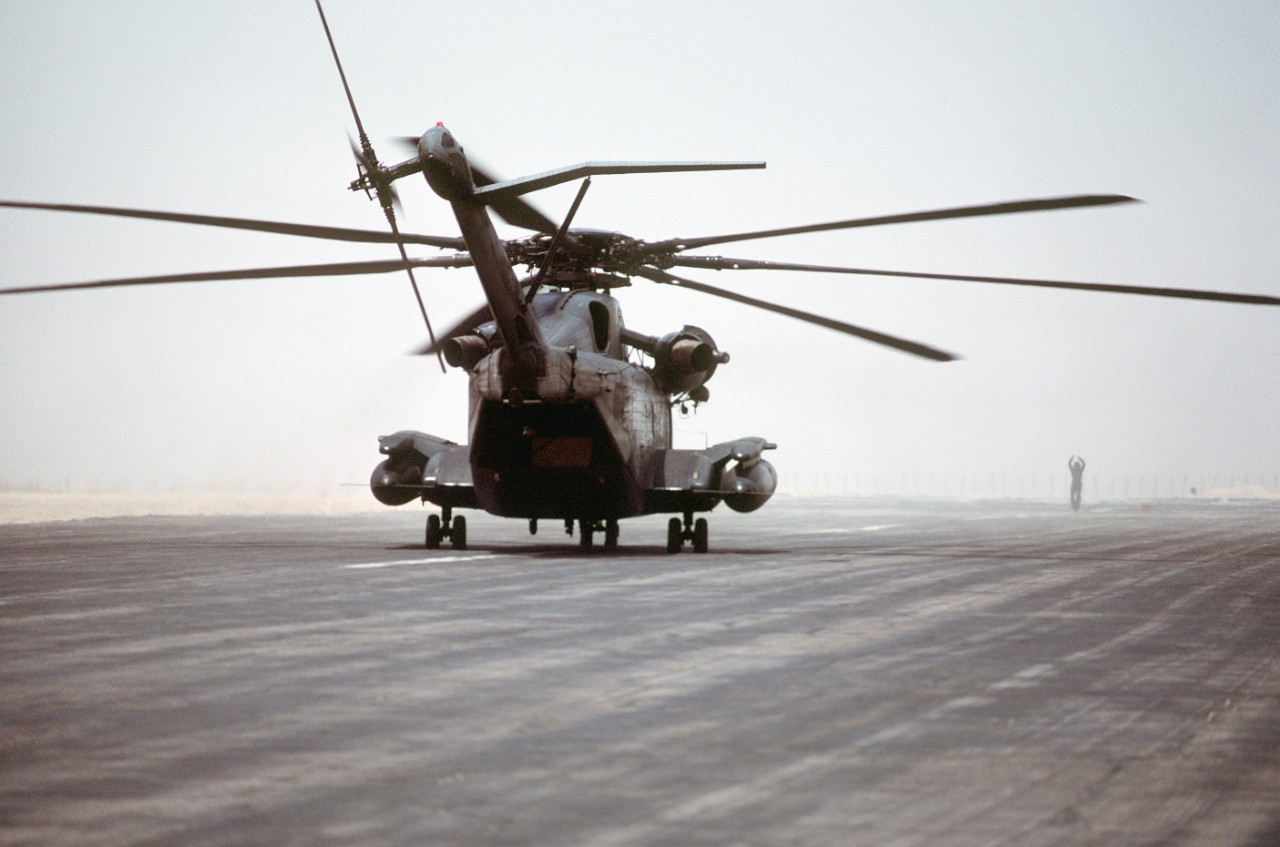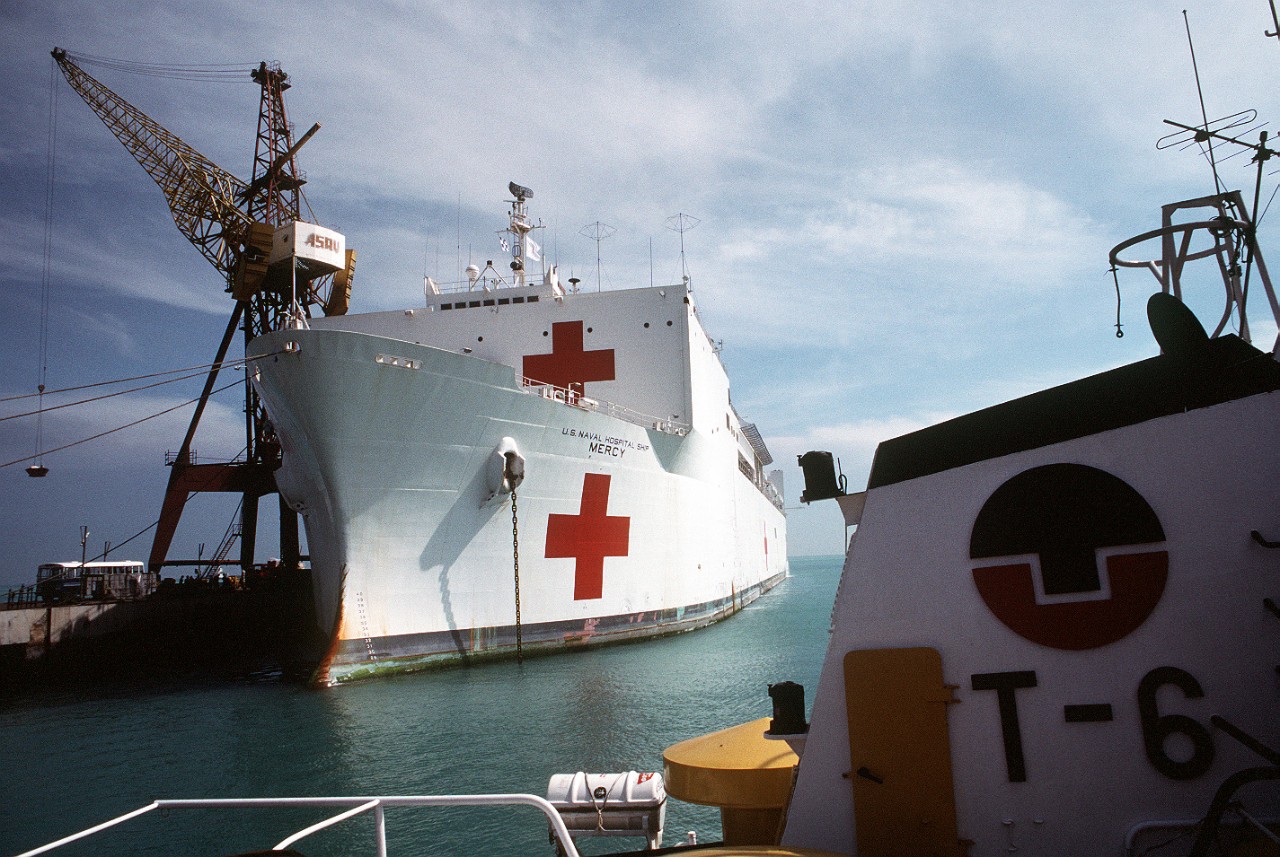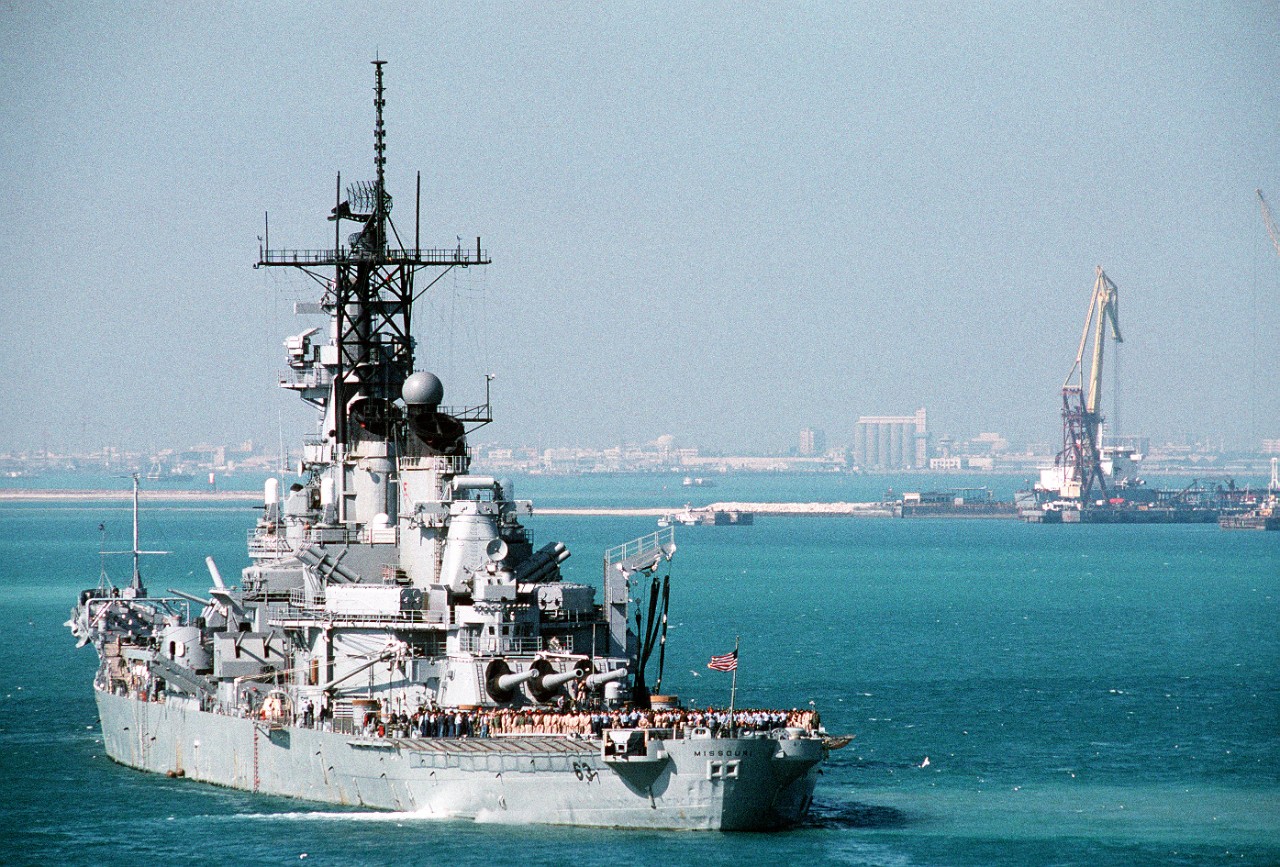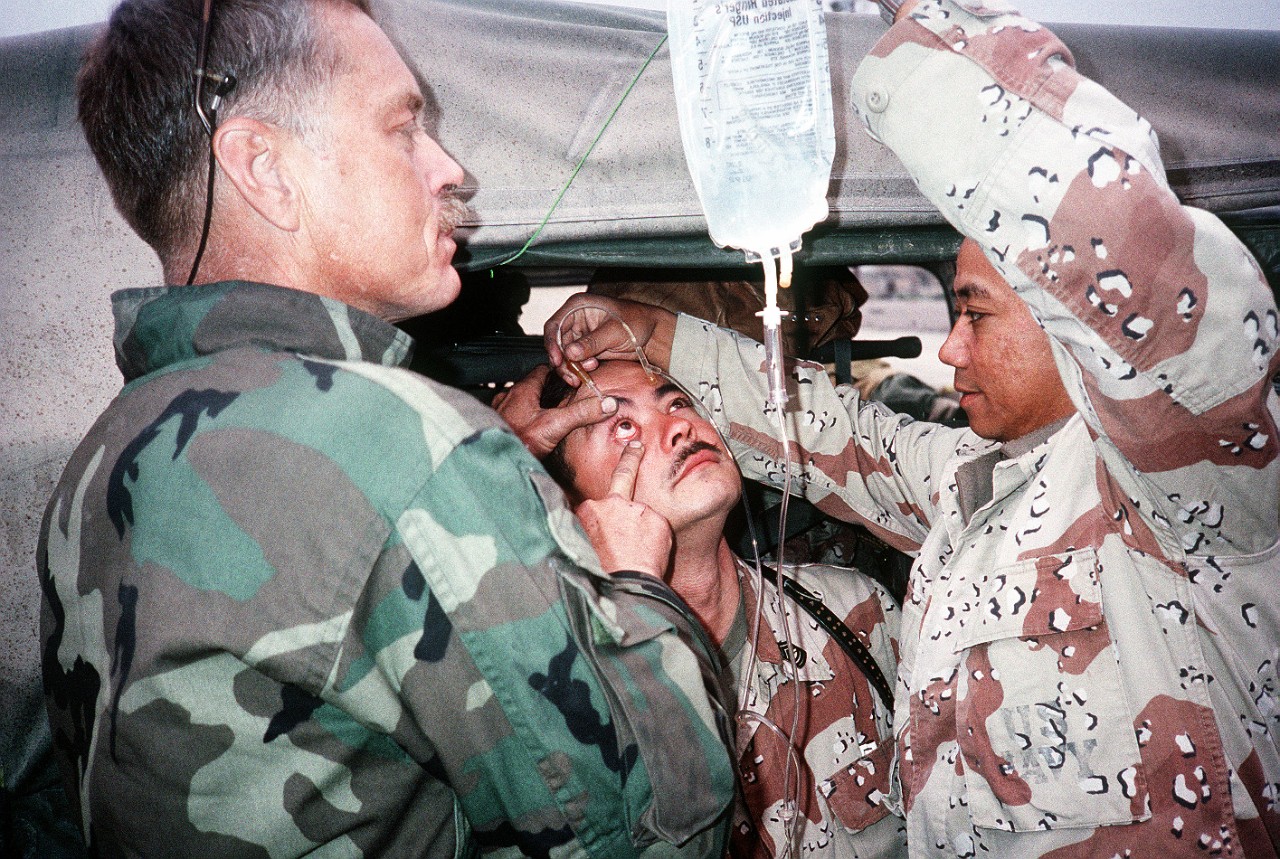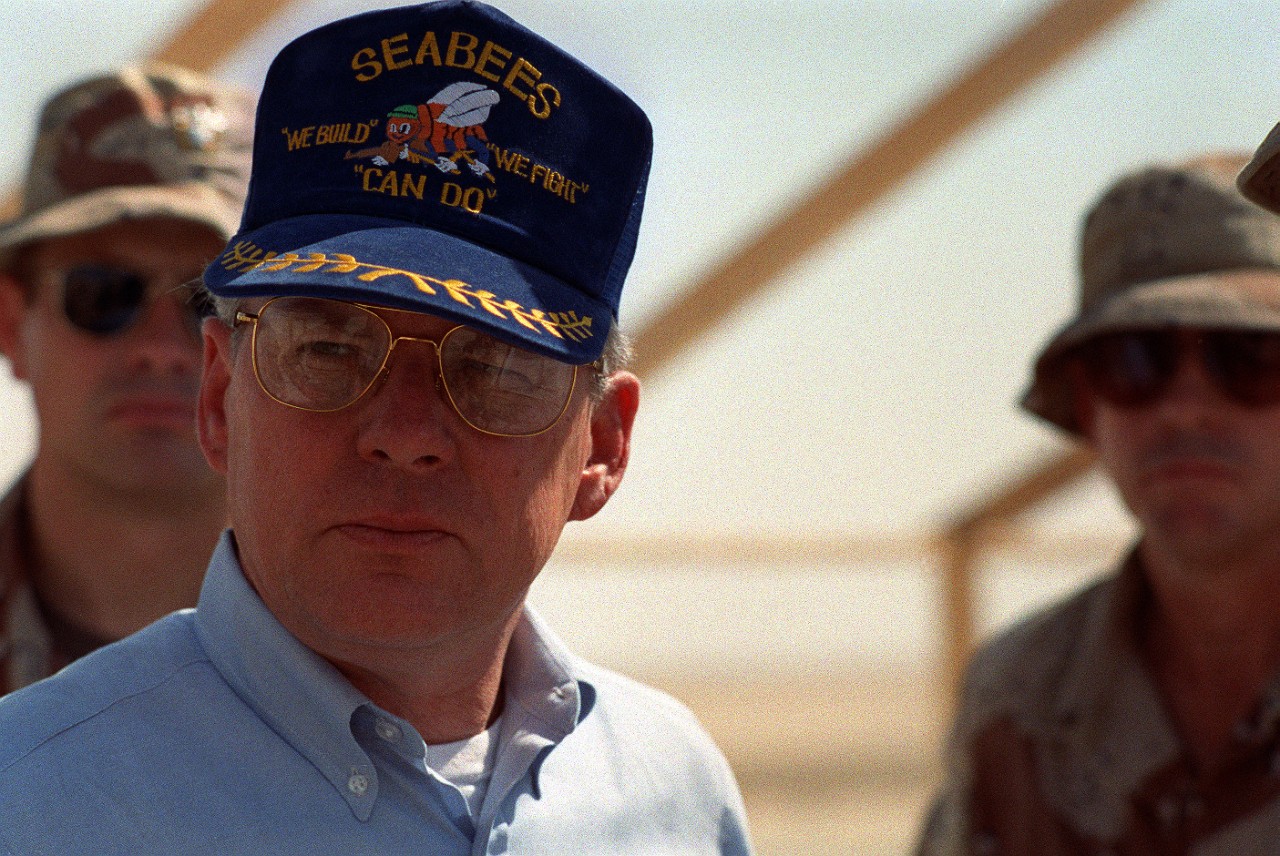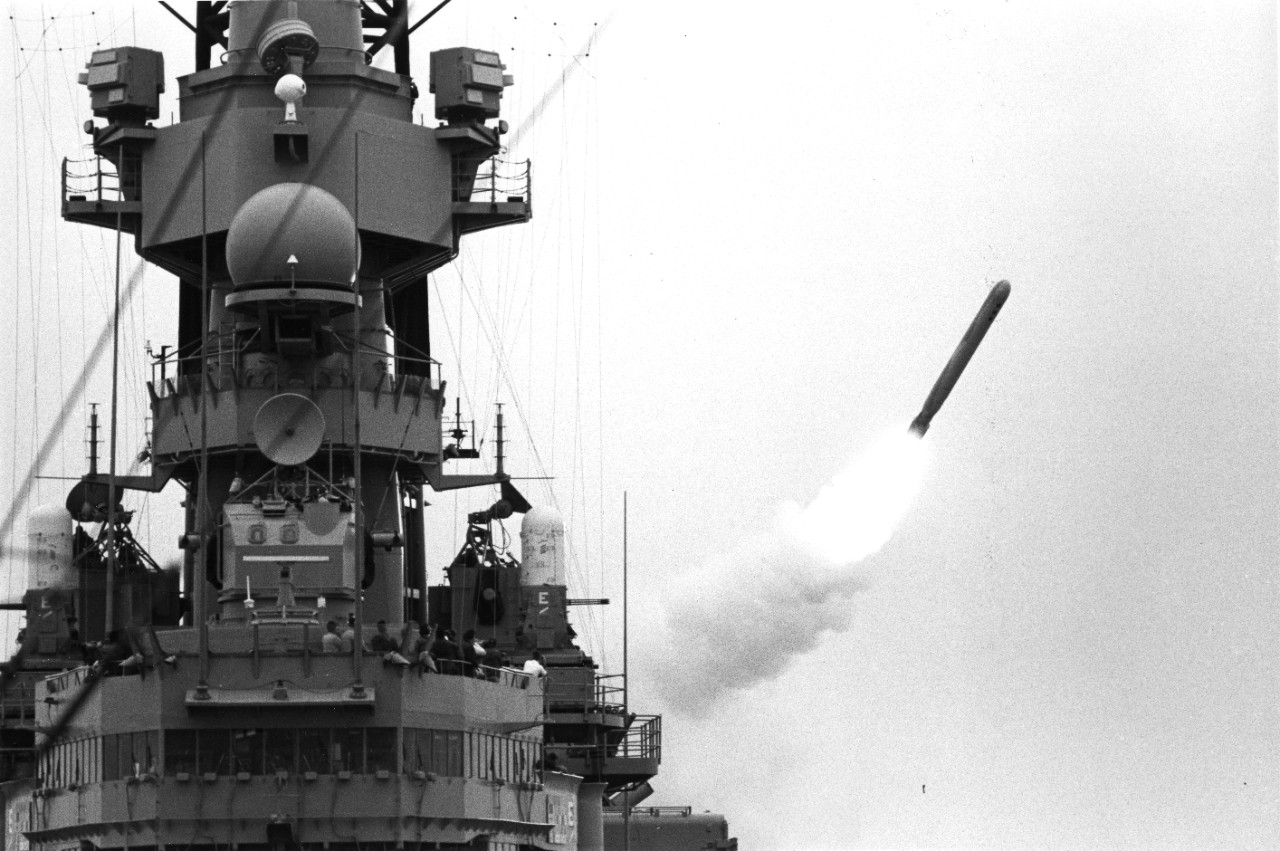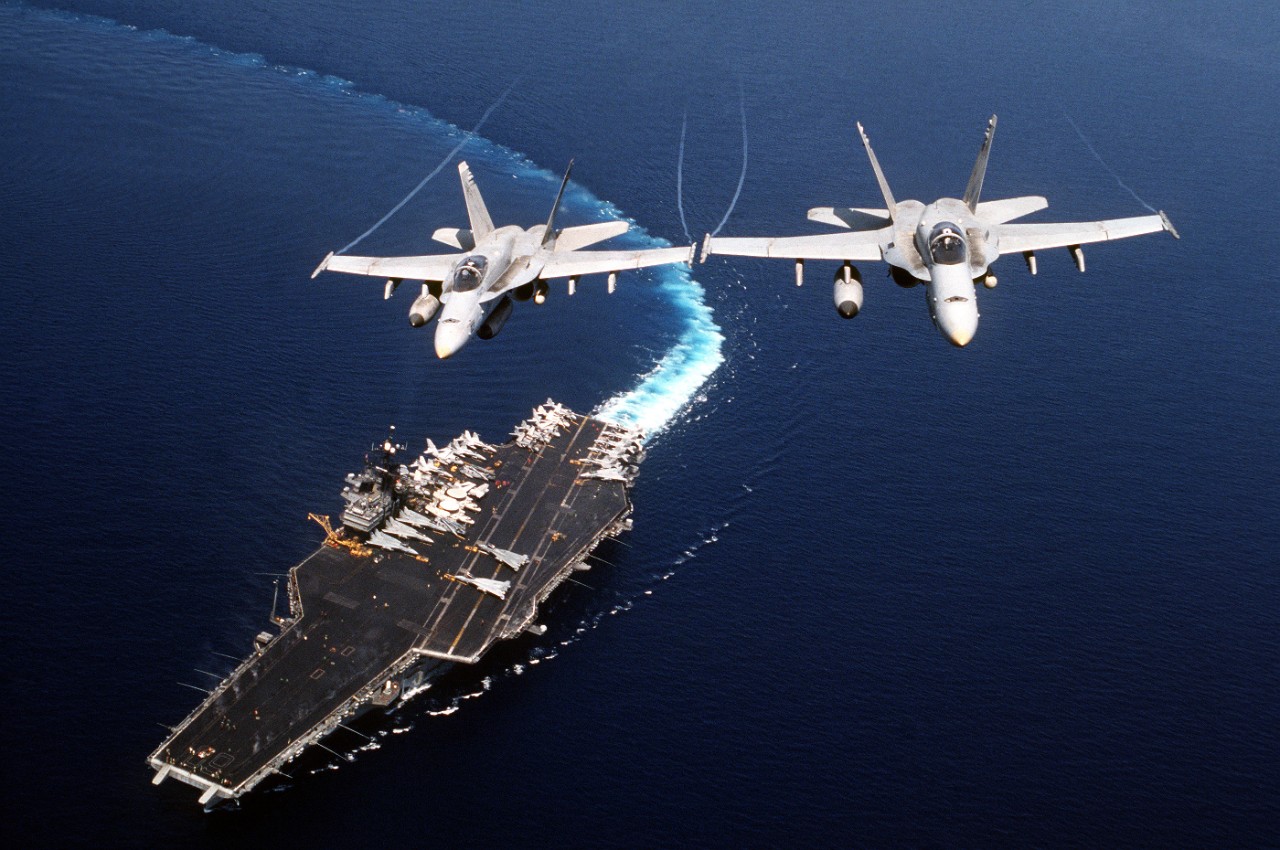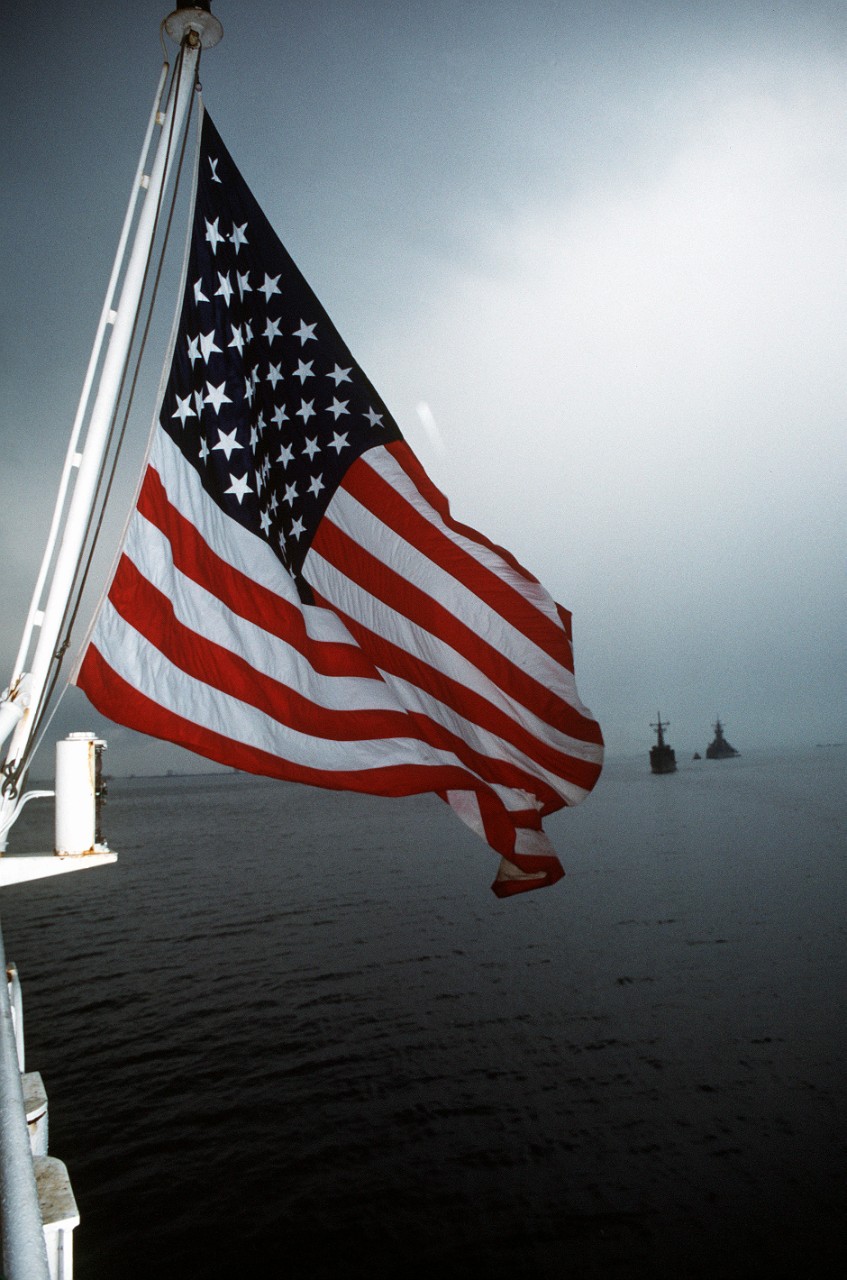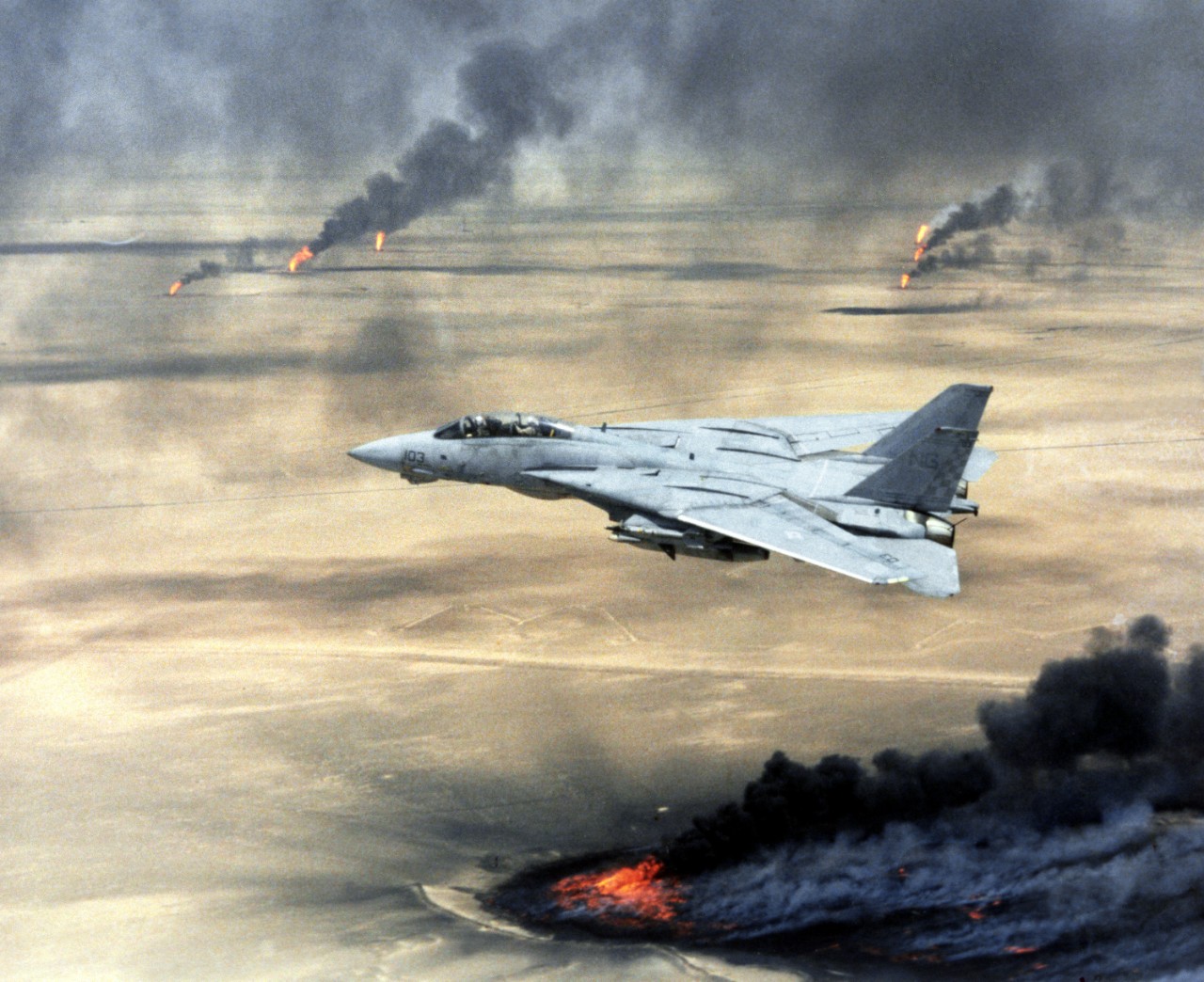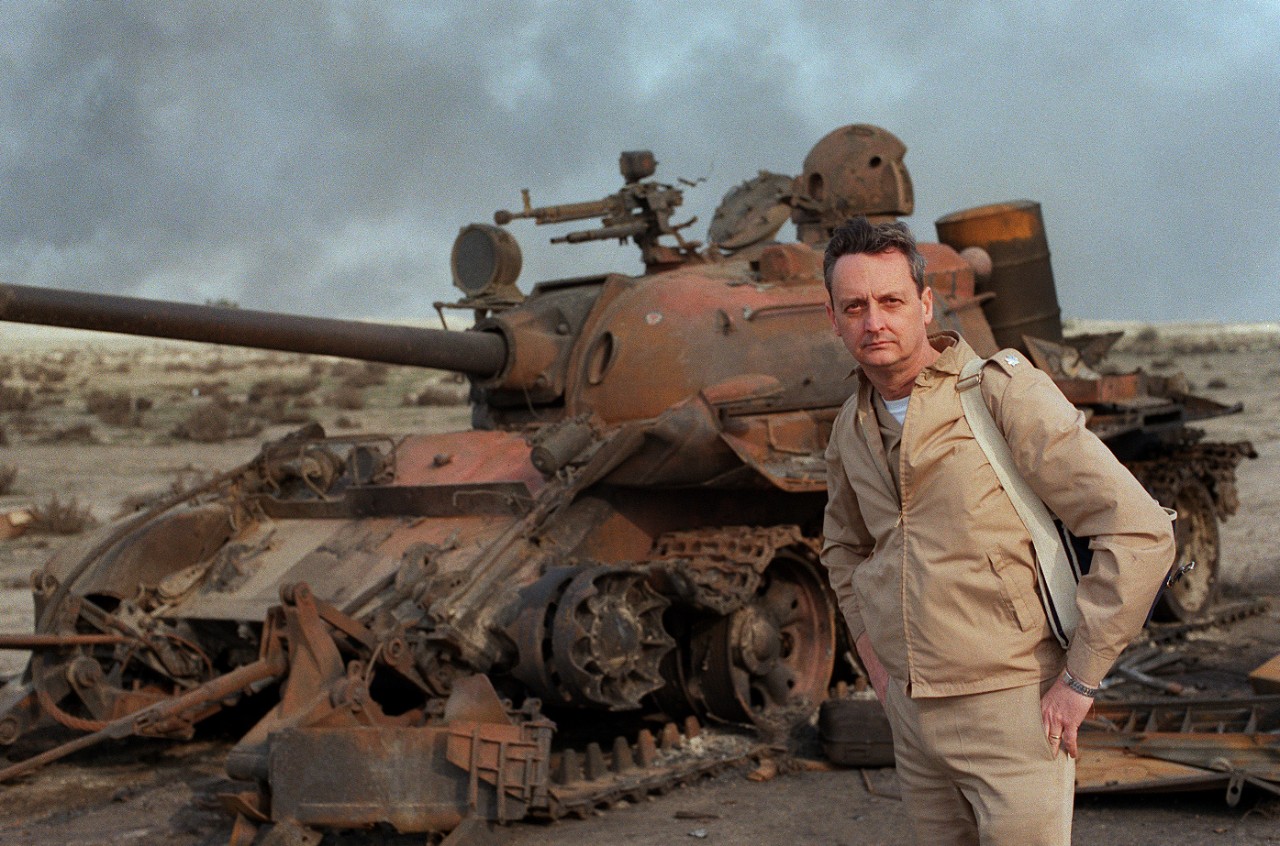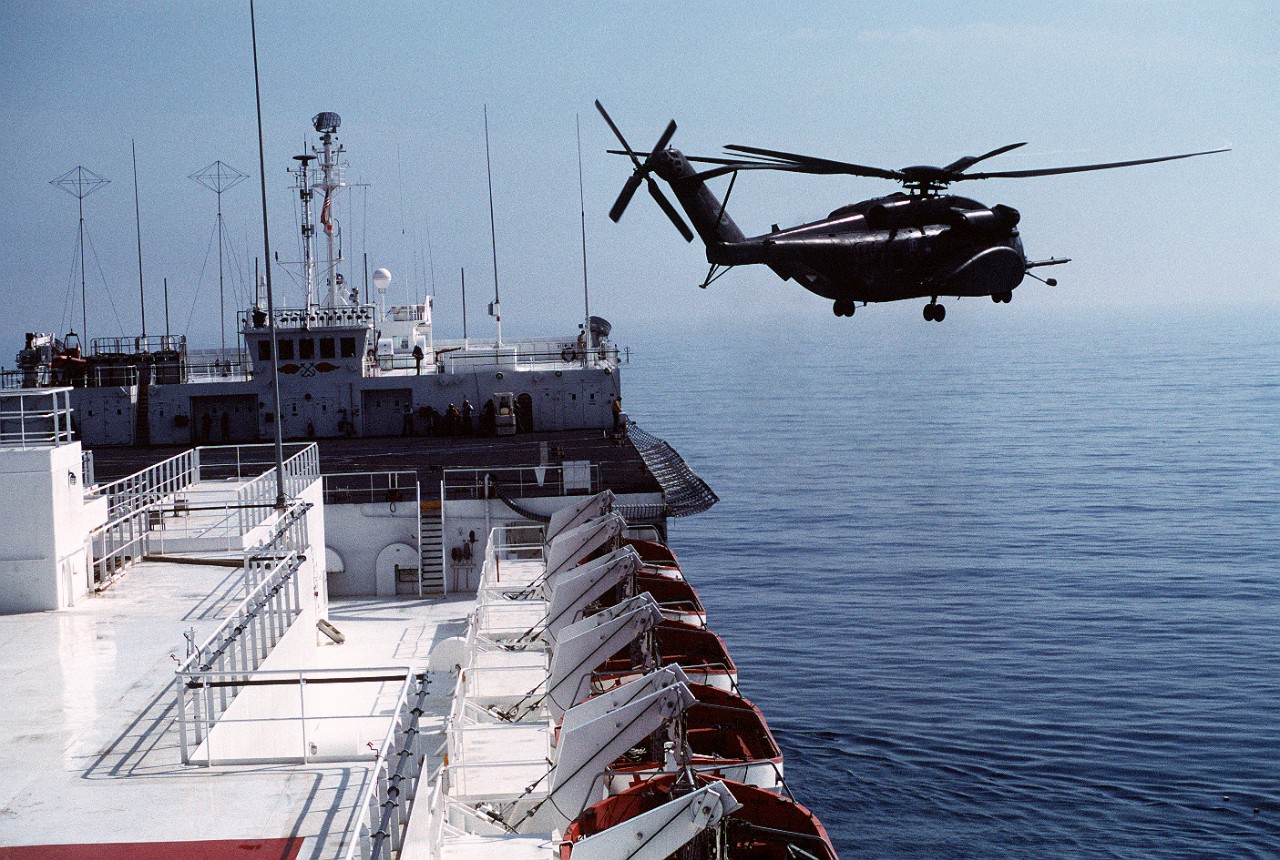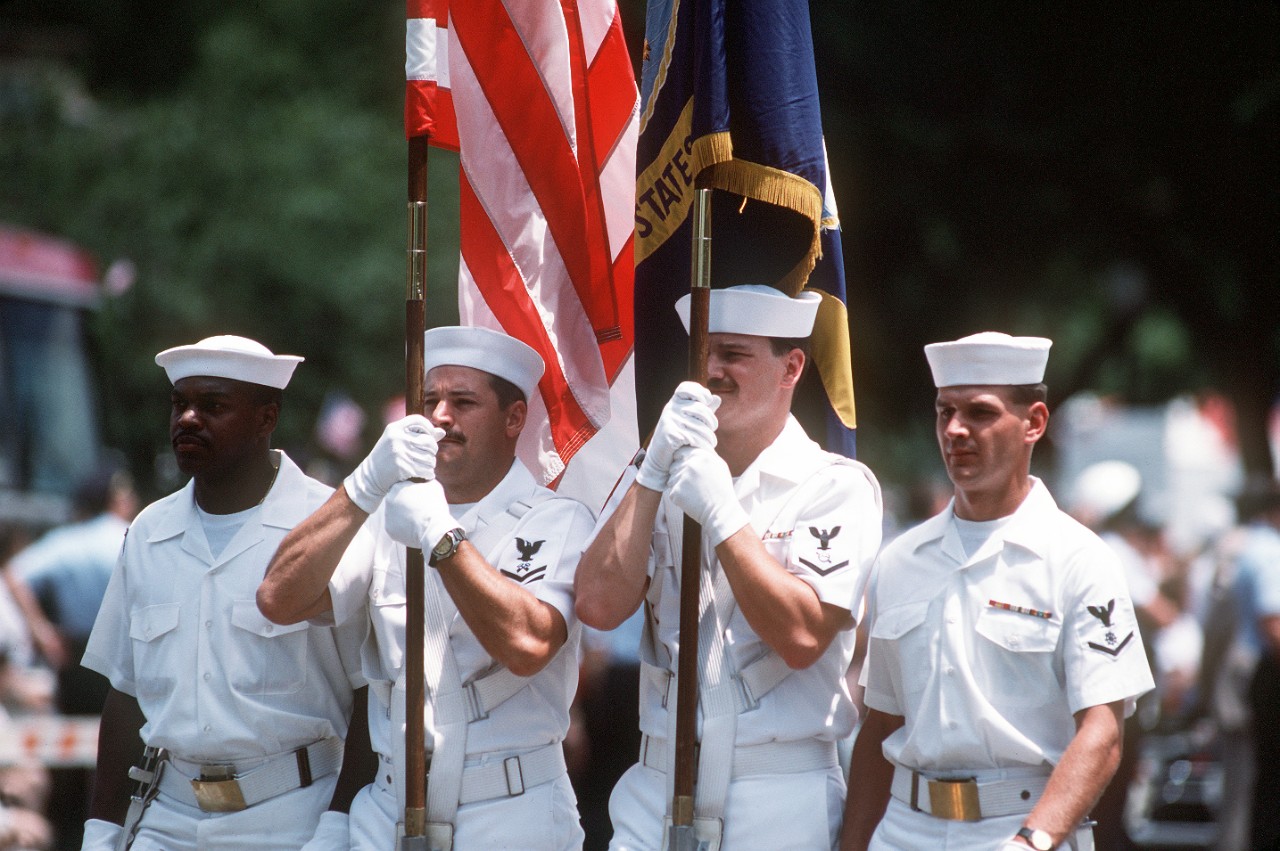Desert Shield/Desert Storm
When the Iraqi army invaded Kuwait on 2 August 1990, the United States deployed a major joint force as part of a multination coalition to stop President Saddam Hussein’s brutal aggression. The U.S. Navy provided sea control and maritime superiority, which paved the way for the introduction of U.S. and allied air and ground forces.
At the time of the invasion, the Navy was already on station in the region. The ships of Joint Task Force Middle East were immediately placed on alert. Battle groups led by USS Independence (CV-62) and USS Dwight D. Eisenhower (CVN-69) sped from the Indian Ocean and eastern Mediterranean to take up positions in the Gulf of Oman and Red Sea, at the ready to commence sustained combat operations.
When President George H.W. Bush ordered the deployment of troops and equipment to defend Saudi Arabia on 7 August, more than 240 ships carrying about 18.3 million pounds of equipment and supplies was facilitated. United Nations trade sanctions were immediately imposed against Iraq to sever the country’s economy. When U.S. Marines began arriving in Saudi Arabia, their supplies and equipment were in close proximity due to low-key military ties with friendly Arab states. More than 21,000 naval reservists were called to active duty in support of Desert Shield/Desert Storm.
Hussein's repeated rejection to abandon the invasion and leave Kuwait led to the commencement of combat operations on 18 January 1991. The subsequent bombardment by air assets and the effects of the economic embargo decimated Iraq's military infrastructure and morale, degraded communications and supplies, and devastated weapons arsenals. During the beginnings of the war, Navy ships launched salvos of Tomahawk cruise missiles against military targets in Iraq to “soften” the battlefield for ground troops.
After the 38-day air campaign, ground troops began sweeping through Kuwait in blitzkrieg fashion. In a mere 100 hours, the Iraqi army was crushed. Iraqi soldiers surrendered by the thousands. Kuwait was free again.
*****
Suggested Reading
- NHHC Director Sam Cox's personal recollections on Operations Desert Shield/Desert Storm
- H-Gram 052-2 Operation Desert Shield: Part 1, August 1990
- H-Gram 053-3: Operation Desert Shield: Part 2, September 1990
- H-Gram 054-2: Operation Desert Shield: Part Three, October 1990
- H-Gram 055-2: Operation Desert Shield: Part Four, November 1990
- H-Gram 056-2: Operation Desert Shield/Desert Storm: Part 5: December 1990
- The United States Navy in Desert Shield/Desert Storm
- Desert Shield and Desert Storm Articles
- Center for Military History: Operation Desert Shield
- Seabee History: Operations Desert Shield/Desert Storm
- Women in the U.S. Military During Desert Shield/Desert Storm
- Operation Desert Shield/Storm Costs and Funding Requirements (1.16 MB pdf download)
- Military Resources: Gulf War/Desert Storm (NARA link)
- Research Aids: Desert Shield/Desert Storm
- Southwest Asia Service 1991–1995 Battle Streamer
- Short Guide to Iraq
- Needs and Opportunities in the Modern History of the U.S. Navy
- Anchor of Resolve: A History of U.S. Naval Forces Central Command/Fifth Fleet
- United States Navy and the Persian Gulf
- Cost of Major U.S. Wars

